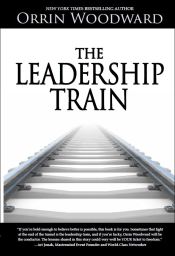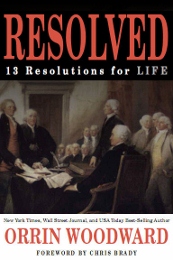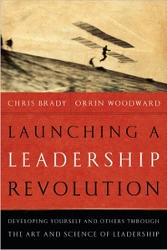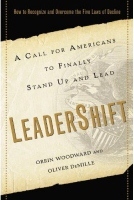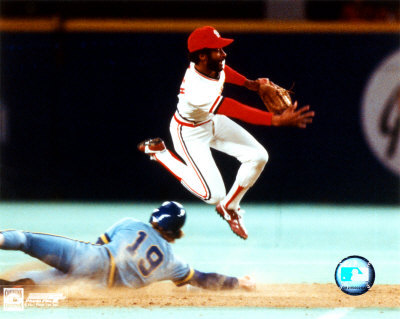For over 3,000 years of recorded history, beginning in the eighth century B.C. with the ancient Greek Olympics, people dreamed of breaking the four minute mile. The early Greeks, loved their athletic competitions, believing that they developed the martial spirit in the people, necessary for success in war. The ancient Greeks city states seemed to live for war, but they loved their sports even more than their wars, calling temporary truces if needed, in order to enjoy their athletic events, in which each city-states brought their best athletes to compete against one another. The largest, and most honored of the competitions, held every four years in Olympia, was called the Olympics. The Greek mentality, named paideia was the ideal, a goal to be pre-eminent, the best, seeking perfection in whatever field of study. Early in the Greek Olympics, the paideia, or perfection, in relation to the mile foot race, was thought to be four minutes flat, a perfect 60 seconds per quarter. Greek runners were impressive, vaunted for their superior conditioning. For example, take Pheidippides, an Athenian herald, who had once run 150 miles, from Athens to Sparta in less than two days, an impressive feat, even by today’s ironman standards. For over a thousand years, Greek runners trained intently, dreaming of being the first to achieve the mythical paideia. Greek folklore recounts amusing training methods, in the attempt to reach the target, one consisting of lions unleashed to chase the runners, in a desperate attempt to motivate runners to improve their foot speed. The dream of the four minute mile captured the Greek consciousness, but the paideia, the perfection, was never achieved. With the last of the ancient Olympics, held near the end of the 4th century A.D., the over 1,000 year quest for the perfect mile ended, without anyone accomplishing the paideia. Many Greeks, in fact, reached the belief that it was physically impossible. During the decline of the Roman Empire, most of the historical records were lost, but a select few were stored away in monastic libraries, not to be rediscovered for multiple centuries. The dream of the four minute mile was buried, along with the rest of the classic past, leaving only fragments of the complete historical record, as the dark ages descended over Europe.
Following the Middle Ages, during the European Renaissance, the re-birth of learning created a hunger for Greek and Latin classics. By reading the ancient manuscripts, the scholars learned of the unconsummated Greek dream of a four minute mile. But with over a thousand years experience with failure, the Greeks no longer wrote optimistically about the possibilities of achievement. The Renaissance scholars, through reading the dismal record of failure in the paideia quest, adopted the limiting beliefs that permeated the Greek records, thinking the four minute mile was illusory. What once was believed the physical target, was now believed to be physically impossible. From the Renaissance scholars perspective, if the ancient Greeks, who exercised their bodies on a daily basis, applying over a thousand years in the pursuit of paideia, couldn’t crack the four minute barrier, then how could anyone accomplish the feat today? This disbelief had grown from a weed into a veritable jungle, blocking the attitude needed to reach for the ideal. It wasn’t a physical disability, but a mental one, holding humanity back. Remember, when a weed grows inside the human psyche, most of the effort is invested in feeding the limiting belief, instead of pulling it out. In this case, scientist, doctors, and running coaches, all spoke on the physical limitations inherent in the human anatomy, spreading their limiting beliefs to anyone who would listen. Sadly, runners from around the globe were listening, leading to the record mile time, at the turn of the 20th century, still ten seconds off from the ‘impossible ideal.”
The 20th century, initiated a new level of worldwide sporting competitions, especially with the advent of the modern Olympics, first being held in 1896. The best of the best, now met every four years, creating the competitive excellence that moved forward the top performances in many sporting events. The original Greek quest, the paideia, for the four minute mile was reborn. Numerous runners, from many different countries, dreamed to be the first to breakthrough the mythical ideal, running a sub-four minute mile. By 1915, the mile record stood at 4:12.6, still over twelve seconds off the target, set by the ancient Greeks, thousands of years before. Superstar runners from all over the world, over the next thirty years, continued to move the mile time closer to the four minute barrier, eventually Gunder “The Wonder” Hagg, on July 17, 1945, ran a mile in 4:01.3. Hagg was so close to the coveted prize, only 1.3 seconds away, yet he never broke the barrier, his world record stood for nearly nine more years, the longest period that any mile record stood for the entire 20th century. In other words, for nearly nine years, this mental weed, this troublesome belief, held its Rasputin like powers over runners from every nation, leading to doubt filled attitudes and no progress towards the goal.
Enter Roger Bannister, a medical student, one of the new breed of runners, who believed that the four minute barrier could and should be broken. For Bannister, breaking the longstanding barrier was a personal challenge, having heard repeatedly that it was “impossible.” It’s interesting to note, that while most get demoralized when hearing others say its impossible, winners get energized. Bannister was a winner and negative stimuli only strengthened his resolve. He trained alone, deliberately avoiding the coaches and managers, believing they were inadvertently holding the runners back by their limiting beliefs and attitudes. By 1953, through applying his own training regimen, using his experiences in the medical field, he had reduced his time to 4:03.6, still short of the mythical standard, but progressing forward. With constant practice, both mental and physical, Bannister slowed his heart rate to less than 50 beats per minute BPM, significantly below the 72 BPM of the average man’s. The lower heart rate allowed him, under the intense strain of running, to maintain a larger oxygen reserve, prolonging the time he could run under anaerobic conditions, making the four minute mile possible. But it was more than just hard training, Bannister, naturally scientific in outlook, analyzed his performance after every run, placing a focus on continuous improvement, he wrote, “Improvement in running depends on continuous self-discipline by the athlete himself, on acute observation of his reaction to races and training, and above all on judgment, which he must learn for himself.” Bannister researched the latest running mechanics, this, along with his scientific methods for training, left him convinced that he could break the record, ending, once and for all, the 3,000 year quest.
Bannister may have trained alone, but he was not alone in the quest for the coveted four minute mile. Two other runners, both Wes Santee and John Landy, had impressive credentials, and both had publicly set the goal to break the mark, leading to a three man race against time for track and field immortality. Santee, an American, was probably the best natural athlete of the three, The son of a Kansas ranch hand, he amazed crowds with his athletic prowess and confident spirit. Santee was the first to publicly state his intention of breaking the four minute barrier. The other, John Landy, was an Australian. He trained harder than anyone, desiring to win, not only for himself, but for his home country this international honor. Landy ran everywhere, in the woods, in the sand dunes, on the beach, revealing an inner drive to be the best that he could possibly be. Each runner understood, that on any given day, that, with the right conditions, they could breakthrough the four minutes barrier. This led to a three dimensional race against time. On the one hand, was the race itself, breaking through the four minute barrier, certainly pressure enough. But, on the other hand, was the race against the unknown, since only one of the three can run a sub-four minute mile the first time, To put it another way, there can only be one time that it’s the first time, and even though all may run under four minutes eventually, the prize, along with the corresponding historic immortality, would only go to the one who accomplished it first. The unknown, was how much time did each runner have before one of his competitors broke through the barrier.
In an article by Neal Bascomb, he describes the hoopla created by these three elite runners: “For weeks in advance of every race, the headlines heralded an impending break in the barrier: ‘Landy Likely to Achieve Impossible!’; ‘Bannister Gets Chance of Four-Minute Mile!’; ‘Santee Admits Getting Closer to Phantom Mile.’ Articles dissected track conditions and the weather forecasts. Millions around the world followed every attempt. When each runner failed–and there were many failures–he was criticized for coming up short, for not having what it took. Each such episode only motivated the others to try harder.” This three man drama, created a buzz throughout the athletic world, leaving everyone debating who would be the first man to break the four minute mile. In the spring of 1954, on an Oxford track, the debate ended.
It was May 6, 1954, on a chilly spring evening, that Bannister’s date with destiny arrived. He traveled to the Iffley Road track in Oxford, where the Oxford University track team competed against his British Amateur Athletic Association (BAAA) team, in their annual track meet. Over the years, the idea of a “dream mile” had been scientifically plotted by sports physiologists and coaches, believing that it would take ideal conditions, with temperatures around 68 degrees, having no discernible wind, and a track made of hard dry clay, in order to accomplish the “dream mile.” Furthermore, along with the perfect weather and track conditions, a planned sequence of quarters needed to be run, the first quarter clocked the slowest, with each subsequent quarter becoming faster, closing with the fastest time being the final quarter. Nearly everyone believed, that without perfect conditions and planning, the “dream mile” would remain just that, a dream. But the conditions in Oxford, on this chilly May day, were far from ideal, forcing Bannister to break nearly every one of the “dream mile” theories in his quest. Rain had drenched the cinder track, making the surface slippery. Meanwhile, the wind had been blowing at practically gale like force for most of the day, reducing the crowd to a mere 1,500 spectators, attending to witness the historic event. Thankfully, with the late 6 p.m. start time, the rain had died down, but sadly, not the biting cross wind, cutting through the athletic track. In spite of these conditions, Bannister knew that he must make this race count. Knowing that Santee or Landy could break the record, in any upcoming race, Bannister reach deep inside himself, revealing the spirit of a champion in his, soon to be legendary, performance.
At 6 p.m., the runners were at the starting line, Bannister, with two of his teammates from the BAAA, lined up with three Oxford runners. In a methodical plan, developed before the race, Chris Brasher, a teammate of Bannister’s, played the jackrabbit, the pacesetter for Bannister. Brasher’s first lap set a blistering pace, with Bannister, running right behind him, timed in 57.5 seconds. This was too too fast, an impossible time to maintain for even two laps, let alone four, making many feel the record would not be broken, at least not on this day. Regaining his composure and the pace, Brasher completed his two laps, collapsing to the side of the track exhausted. Bannister’s half mile time was 1:58.2, which, although fast, was within the range set beforehand, leaving a possibility that Bannister could pull it off. At the start of the third lap, Chris Chataway, the third BAAA runner, in accordance with the plan, sprinted to the front, allowing Bannister to draft behind him. Chataway, ran a stellar third lap, giving it all he had, until, depleted of energy, he fell off the pace, but Bannister, thanks to the pace set by his friend, completed the third lap in 3:00.7, well within shooting distance of the prize. But, the million dollar question was, how much gas did he have left after the grueling first three laps. Bannister didn’t take long to answer that question, when, with three hundred yards to go, he began his final kick, tapping into a reservoir of energy, known only to himself, he lengthened his stride, rolled his head back awkwardly, and gave it everything he had, literally collapsing as he broke the tape, passing out momentarily from the extended physical and mental exertion.
Pensively, the crowd awaited for an official announcement, which finally came over the loudspeaker: “A time which is a new meeting and track record, and which, subject to ratification, will be a new English native, a British national, a British all-comers, European, British Empire, and world record. The time was three minutes. . .fifty-nine and four-tenth seconds.” The crowd erupted in applause, pandemonium ensued as people realized the momentous event they had just witnessed. Bannister had run the fourth lap in an unbelievable 58.7 seconds, smashing through the four minute mile barrier with a final time of 3:59.4 seconds! After his superhuman effort, Bannister regained consciousness quickly, but suffered momentary color-blindness from his other world exertions. His standard heart rate of 50 BPM had soared to over 155 BPM, not returning to normal for over three hours. Bannister completed his 1954 dream season in style, winning the British and Empire championships in the mile run, along with the European title in the 1500 meter event. After his record breaking season, Bannister announced his retirement from athletic competition, pursuing his medical career full time. In 1955, he wrote a book on his track and field exploits, called, The Four Minute Mile. He earned his medical degree from Oxford, becoming a neurologist and in 1975, he received the honor of being knighted by Queen Elizabeth II, a fitting close to an extraordinary career.
Bannister, when he raised the bar on what is possible, received more than his fair share of criticism, carping, and nay sayers, but he didn’t hear them, choosing not to listen. Instead, he focused his attitude on what he believed possible, not on what others said was impossible. In the author’s opinion, the most incredible part of this story, isn’t Bannister’s four minute mile, but what happened to the other runners when Bannister ran his four minute mile. Remember, the mile record had stood at slightly over four minutes for nearly nine years, but the year after Bannister broke the four minute mile, other runners broke through their mental barrier, leading to 37 runners breaking the four minute mile. What would account for the fact that, in nearly 3,000 years, no runners broke the four minute mile, but numerous runners did over the next five years? It certainly cannot be physical conditioning, improved tracks, or improved shoes, what improved was the beliefs and subsequent attitudes. Over the following years, things really get crazy, as hundreds of runners broke the four minute mile. Nothing changed but the belief window, leading to a can do spirit can account for such a radical change in results in so little time. What was once thought impossible, now has become routine, simply because, a man with better beliefs and positive attitudes, proved that it could be done. Bannister, in an interview with Guardian News, fifty years after his historic accomplishment said, “Until then, there had been a widespread belief that it was physically impossible for a man to run the mile in less than four minutes. People claimed the human body would burst amid such a trial of speed and endurance. Bannister, slipping into his best Inspector Clouseau-style accent, remembers that, “a Frenchman once said to my wife, ‘but ‘ow did ‘ee know ‘ees heart would not burst?’ Even Landy spoke of a ‘cement wall’ protecting the four-minute mark. But I knew it could be done.” Bannisters knew it could be done, this made all the difference, because the real barrier to break in the four minute mile, wasn’t physical, but mental.
Beliefs and attitudes will propel one towards or repel one away from his goals, depending upon whether one is leading the beliefs or allowing the beliefs to lead him. Bannister’s personal breakthrough pulled a 3,000 year old weed, removing a mental block, helping thousands of runners achieve better results. This principle works in every field. When leaders do the “impossible,” others will step up to the plate, modeling their beliefs and behaviors. What would happen, if a group of leaders broke through their mental barriers, achieving the Bannister Effect in their professions, helping many others fulfill their untapped potential. The world needs more men and women with the attitude of Bannister, willing to take criticism, using it, not to get demoralized, but to get energized. God Bless, Orrin Woodward
